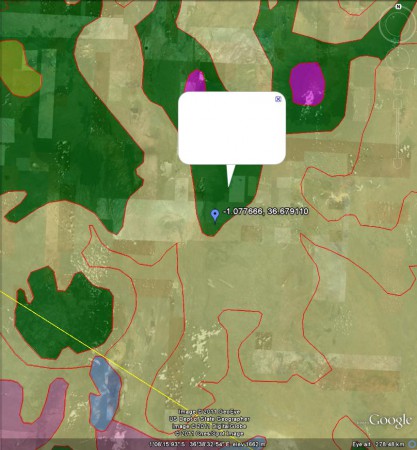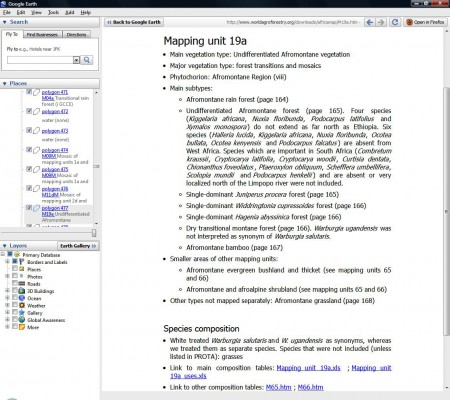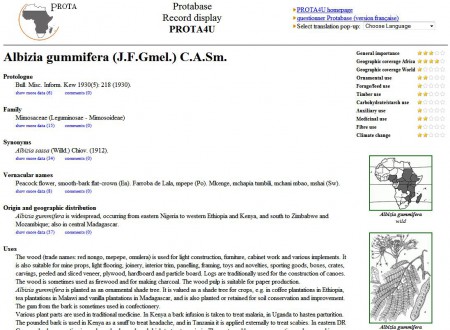- See what WWF thinks will make agriculture sustainable.
- Americans are dying younger. Obesity partly to blame.
- Study shows how scientists can get farmers to innovate. And vice versa?
- Iron-age beer in France. “Beer … might have resembled modern home brews.” Which might have created a nation of wine-drinkers.
- Voice of America ♥ Nourishing the Planet. (African farmers also important.)
- Bacteria in mosses on tree branches fertilize forest soils. How long before the whole thing is available in a packet?
- Bioengineering the prairie. Together with, presumably, its crop wild relatives.
Nibbles: Millet, Goat, Heirloom Veg, Tamarind, Rice domestication, Rice sustainability, Microbes, Competition
- The importance of multi-purpose crops in Africa.
- The importance of multi-purpose goats, everywhere.
- Target reader reviews The Complete Idiot’s Guide to Heirloom Vegetables.
- Tamarind charcoal loses out to tamarind drink, Malawian villagers rejoice.
- Has intellectual piracy been with us since humans first became engaged in agricultural production? AoB blog asks the tough ones.
- Land-use intensity and Ecological Engineering – Assessment Tools for risks and Opportunities in irrigated rice based production systems launched. Glad they have an acronym.
- Microbe diversity matters too.
- OK, so nobody nominated us, but the semi-finalists at the 3QD science writing competition have been announced.
Nibbles: Food security, Food carts, Cotton, Ritual, C4 C3 CC, American Indian diets, Community genebanks in India, Fowler, Dark earth soil, Domestication
- German donor examines food and security, notes “the fast loss of biodiversity”.
- Food carts are successful oases in at least one food “desert”.
- Yesterday’s Botany Photo of the Day was American cotton.
- Good news, everyone: “Hardcore farmers prefer lowkey rituals.” Obviously the memo didn’t reach the children of the corn.
- Photosynthesis and climate change: it’s complicated.
- Native Americans try to reclaim control of their foodways. And their waists.
- “…every district should have a community-controlled seed centre with a gene bank for traditional seeds.” Of course it should. “The local available seed diversity needs to be protected and conserved at any cost.” Of course it must.
- “Right now, all over the world, projects are underway to store seeds…“
- Dark earths not just in Amazon, Africa too.
- Presentation on IFAD project on cultivating wild aromatic etc. species for money in Morocco.
Nibbles: Royal genebank, Fish collection, Plant health, USDA wheat breeding project, Afghanistan, Breadfruit Art, Pests and Diseases, Idaho, Plant breeding, Gates, Panax quinquefolius, Natives
- Thai king has crop genebank on palace grounds.
- Fish in jars.
- Planning Plant Clinics.
- Plant Breeding for Drought Stress: The Project.
- Wait, the Nebraska National Guard has an agribusiness development team? Maybe they should talk to the people responsible for the previous bullet point?
- Kids! (And adults!) An Art Contest to celebrate ‘Ulu. Breadfruit, that is.
- Use of Agrobiodiversity for Pest and Disease Management. A slide show from Carlo Fadda at Bioversity.
- 3rd Annual Biodiversity Working for Farmers Tour in Idaho. 23rd June, you have been warned.
- Huge New York Times story on plant breeding and climate change.
- Bill Gates hails creativity for small farmers challenge.
- American ginseng: use it or lose it.
- Do you live in Ann Arbour? Do you want native plants for your garden? Yeah but how about American ginseng?
The mother-in-law and the Useful Tree Species for Africa
ICRAF have a nifty new tool out called “Useful Tree Species for Africa.” I’ve been playing around with it and I have to say it’s impressive. Not altogether easy to use, but impressive. If you’re at all into using native trees in Africa — for whatever reason or purpose — you’ll want to explore it. Here’s a taste of what it can do.
You download the kmz files from the ICRAF website and open them in Google Earth. 1 Then you think of somewhere you’re interested in. In my case, as usual in these situations, I chose the site of the mother-in-law’s spread above Limuru in Kenya. Useful Tree Species for Africa first tells you what sort of vegetation is potentially found there, according to White’s iconic Vegetation Map of Africa.
In this case, it’s “M19a Undifferentiated Afromontane vegetation (viii AMCE)”. What does that mean? Well, there’s a hyperlink which gives you more information on Mapping Unit 19a:
Crucially, this page, which opens in Google Earth, includes more hyperlinks, to four different species tables. Say you are interested in tree species found in this sort of vegetation that can support honey production. You click on the hyperlink labelled “Mapping unit 19a_uses.xls.” That in turn opens an Excel spreadsheet with a list of about 50 tree species and lots of different types of uses. You sort the species on “Bee fodder” and you get a shortlist of about 17 species, from Albizia gummifera to Syzygium guineense. Clicking yet again, this time on the species name, takes you to the PROTA page on the tree, with lots more information. Now, what would be really cool in due course would be a cross-link to ICRAF’s Tree Seed Suppliers Directory, so that you could work out where to get seed of your useful tree.
As I say, nifty. Lots of clicking, and opening of webpages, and of spreadsheets, and of more webpages, but you do end up with the information you want. If your query is place-based rather than species-based, that is. I don’t think the tool will let you start with a useful tree and work out where you can grow it, rather than start with a place and work out what can grow there. But let me play around with it a bit more. Maybe I’m wrong.


